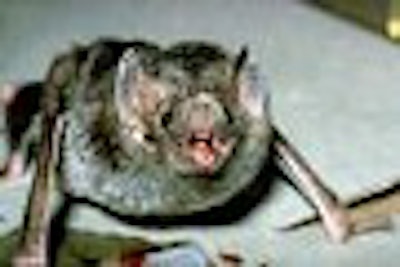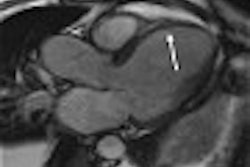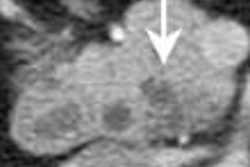
SAN DIEGO - Vampire bat saliva can be used up to nine hours after an ischemic stroke for thrombolysis, with follow-up MR detection, according to a presentation this weekend at the American Heart Associaton's International Stroke Conference.
"We found that MRI can be used to detect patients’ responses to this thrombolytic therapy," said Dr. Steven Warach, the senior investigator of the Desmoteplase in Acute Ischemic Stroke (DIAS) study. Warach is the chief of the section of stroke diagnosis and therapy at the National Institutes of Neurologic Diseases and Stroke (NINDS) in Washington, DC.
Desmoteplase, manufactured by Paion of Aachen, Germany, is a recombinant version of the enzyme found in the saliva of a bat known Desmodus rotundus.
The researchers recruited 104 patients who were 3 to 9 hours post-stroke onset, and also had an MR perfusion-diffusion mismatch. The patients were randomized to fixed doses of 25 mg, 37.5 mg, or 50 mg of desmoteplase, or to placebo. In a dozen patients, due to excessive symptomatic intracranial hemorrhaging, the dosage was lowered. This group was randomized to placebo, while 45 were randomized to lower, weight-adjusted escalating doses of desmoteplase, consisting of 62.5 g/kg, 90 g/kg, and 125 g/kg.
MRI was repeated four to eight hours after treatment, and at 30 days. The researchers defined a reperfusion response as a reduction in the hypoperfusion volume of at least 30%, or improvement in magnetic resonance angiogram (MGA) artery patency by two or more thrombolysis in myocardial infarction (TIMI) points.
A pretreatment perfusion-diffusion mismatch of at least 20% was found in 94% of the patients. During the dose-escalation part of the study, four reperfusion rates increased in 20% of the placebo patients, in 23% of patients on 62.5 g/kg of the therapy, in 46.75 of those on 90 g/kg, and in 71.4% of those on 125 g/kg. At 30 days, the lesion volume was reduced in patients at the last two doses.
"Imaging is essential for assessing the efficacy of this therapy," said co-investigator Dr. Howard Rowley, associate professor of radiology and neurological surgery at University of Wisconsin Medical School in Madison. "The entire trial was driven by perfusion-diffusion mismatches. It’s exciting to see that advanced imaging can be used and may be required in the future to triage acute stroke patients and select them for appropriate therapies."
Rowley added that the advantages of desmoteplase are its high activity as a fibrin-selective plasminogen activator and a long time frame within which the therapy is effective.
"When you think about it, vampire bats and stroke victims have the same goal: free-flowing blood," he said. "As with all clot-busting drugs, this treatment should only be used in patients with appropriate lesions who reasonably benefit. Those would be patients with a small area of infarction and a surrounding penumbra."
By Paula MoyerAuntMinnie.com contributing writer
February 9, 2004
Related Reading
Nuclear medicine specialists find success with corn-fed cholescintigraphy, October 3, 2003
Ice cream pretreatment improves myocardial sestamibi imaging, October 18, 2002
Good to the last drop: Caffeine enhances BOLD fMRI results, May 14, 2002
Melatonin puts kids to sleep, makes MRI a dream, December 10, 2001
Senna granules clear the way for better barium enemas, July 21, 2001
Blueberry juice enhances pediatric MR urography, April 26, 2001
Copyright © 2004 AuntMinnie.com



.fFmgij6Hin.png?auto=compress%2Cformat&fit=crop&h=100&q=70&w=100)




.fFmgij6Hin.png?auto=compress%2Cformat&fit=crop&h=167&q=70&w=250)











